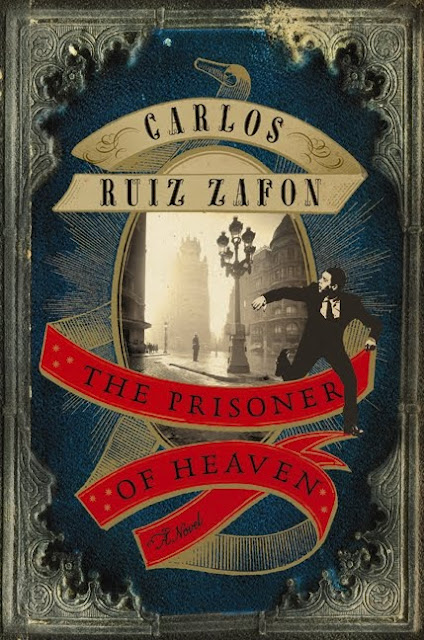
Carlos Ruiz Zafón’s latest work The Prisoner of Heaven is the third in his seires, the second novel The Angel’s Game was published in 2009 and the The Shadow of the Wind, that has sold more than 15 mil copies worldwide, in 2004. Zafon himself claims you don’t have to read his books in chronological order, which seems to be true. Two characters, Daniel Sempere, a passionate lover of literature and his friend Fermin, former spy and legendary ladykiller, bind these three novels together. Otherwise each novel has its own particular plot which is easy to follow without getting the feeling of „missing something important“. There are some storylines, which find their sequel in the next novel: The Prisoner of Heaven provides answers to what happened to David Martin, the writer who makes his first appearance in The Angel’s Game, or The Prisoner of Heaven casts some light to the death of Daniel’s mother, whom we first meet in The Shadow of the Wind.Despite these connections the novels can be enjoyed as separate works.
In The Prisoner of Heaven we find ourselves in late-1950s Barcelona. Like the earlier novels, this one centers on a phantom book (The Count of Monte Cristo, this time) and is haunted by memories of the Spanish Civil War and the still-ongoing nightmare of Franco’s fascist dictatorship. Daniel Sempere, young hero of The Shadow of the Wind, is now grown up and is working in his father’s bookshop. He is married to Bea. His friend, Fermín Romero de Torres is now engaged. But when a creepy stranger with a porcelain hand turns up one day in the bookshop, the past threatens to unravel this present happiness. And here the adventure begins, throwing us back to the post Civil WaCr period.
As with The Shadow of the Wind, there is a historical story within the story. Major part of the book consists of a flashback to Fermin’s experiences, beginning in 1939, in a prison used to house political prisoners. There he meets the villain of the book – a failed novelist and poet, the ambitious head of the prison – Valls, the talented writer Daniel Martin and the mysterious man with mutilated hand.
The melodramatic changes in the plot and literary nostalgia, which Zafón sometimes seems to enjoy, are compensated by stylish writing and Gothic atmosphere. Beneath the surface political anger can be sensed.
Steven Pool from The Guardian says: “Like his countryman Arturo Pérez-Reverte, Zafón combines sincere engagement with genre tradition, with clever touches of the literary postmodern“.
The Prisoner of Heaven ends with one villain still at large, so it’s only expectable that at least one book in this seires is still waiting to be published.
Check from the e-catalogue ESTER
Eha Elmi
Department of Literature in Foreign Languages

